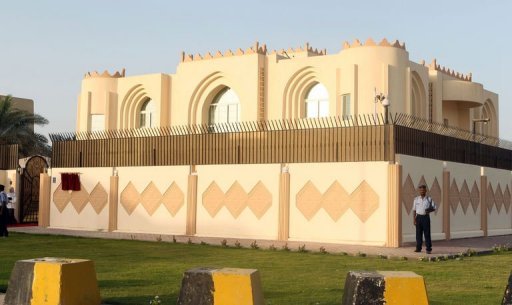The decision by the Taliban to hoist their own “Islamic Emirate” flag above what was supposed to be just a “political office” in Doha, Qatar is more than just an embarrassment for President Hamid Karzai of Afghanistan, and more than a stumbling block in negotiations over U.S. withdrawal from the country. Rather, the provocative gesture unmasks that withdrawal for what it is: a surrender, and a betrayal of the war against terror.
As the smoke rose from Ground Zero, the U.S. and NATO made clear that unless the Taliban regime handed over Osama bin Laden and Al Qaeda, it would be removed. The Taliban, perhaps believing that the U.S. did not have the stomach for a fight, refused. And so they paid the price. Theirs was not to be a temporary removal, but a deterrent against any other regimes that would dare to host or assist anti-American terrorist groups.
The Taliban, along with Al Qaeda, were routed. But they sheltered in the border regions of Pakistan, regrouped and launched an insurgency against the new government of Afghanistan, NATO, and the United Nations. Then-Sen. Barack Obama blamed the Bush administration for expending military resources on Iraq that could have been used in Afghanistan and pledged that, as president, he would do the opposite.
After much dithering, President Obama did authorize a surge in Afghanistan. But he provided far fewer troops than military leaders had requested, announced a timetable for withdrawal, and failed to make victory over the Taliban a key goal. Indeed, the administration began to search for ways to negotiate with the Taliban, searching for leaders and factions it could portray as “moderate,” even as the terror continued to accelerate.
On May 2, 2011, the U.S. found and killed bin Laden in Pakistan, enabling President Obama to claim victory for his policy–even though the intelligence that led to bin Laden would likely not have been available without the U.S. presence in Iraq and enhanced interrogation techniques, both of which Obama had opposed and, as president, reversed. The president began accelerating plans for a withdrawal, before victory had been won.
Essentially the Obama administration’s policy repeats the mistakes of two decades earlier, when the U.S. enabled the mujahideen to drive out the Soviets, then left a vacuum behind into which the Taliban emerged and within which Al Qaeda was able to organize its war against America. Worse, the Obama administration has helped the Taliban re-establish its legitimacy–and, now, to portray itself as a government-in-exile.
President Karzai is, understandably, upset. He has been a disappointment as a leader–cozying up to Iran, criticizing the U.S. forces that protect his government, rigging elections to remain in power, shoveling money to his friends and cronies. But he has a legitimate grievance against the Obama administration, which has treated him with contempt from the start and has foolishly allowed the Taliban a diplomatic foothold.
Allowing the Taliban to return to power, in any form, is effectively a reversal of the gains made in the war on terror, as well as the important deterrent laid down in the aftermath of 9/11. The effort by the Taliban to exploit their “political office” to boost their status and their claim to power was entirely predictable. When–not if–talks resume, they will accelerate the slide into surrender, both in Afghanistan and beyond.

COMMENTS
Please let us know if you're having issues with commenting.